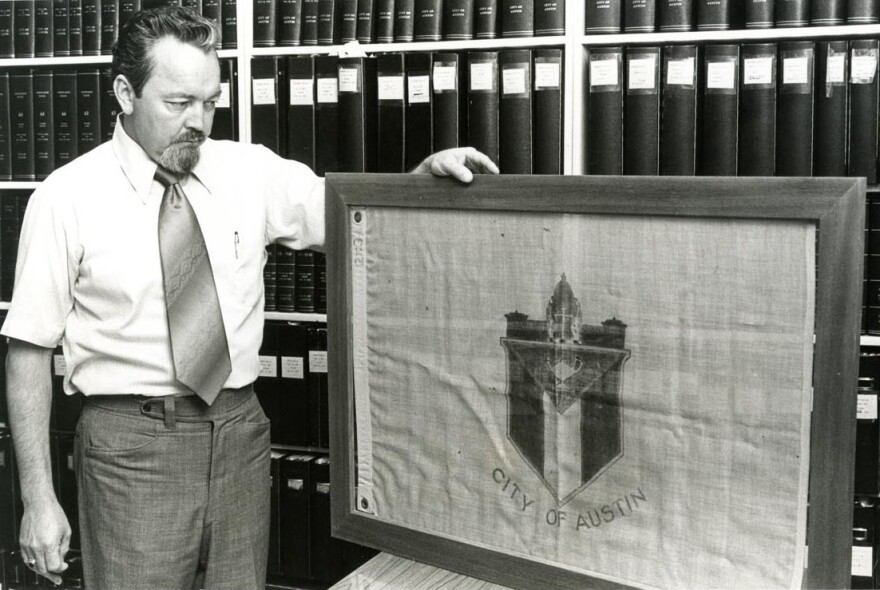Turns out, some people don’t like Austin’s flag.
But, while some have proposed more vexillologically sound alternatives to the city’s banner, the typically panned flag has weathered relative obscurity, features elements that pre-date the establishment of the United States and was even once at the center of a federal lawsuit.
The flag’s history began during the Great War, but the idea for a municipal flag didn’t start in the Austin City Council chambers. The effort started with the wife of W.R. Wyse, who persuaded her husband to convince his friend, Mayor A.P. Woolridge, that the City of Austin deserved its own flag. So, at the behest of the mayor’s resolution, the city tasked a 40-person committee to look at the issue. Their solution: a design competition.
The city partnered with UT’s School of Architecture to push the contest nationally. Submissions had to be drawn on an 8-by-10-inch piece of white paper and had to be submitted by October 2, 1916. They would be judged by a seven-member design committee and then approved by the 40-person general committee. A January ad in “The Architect and Engineer of California” read:
Features that may be expressed in the designs are the natural beauty of Austin, the lake and dam, the capital of the State, the dome of the Capitol, the seal of the city, an educational center, its industries, the sentiment of its past history, the derivation of the name—from Stephen F. Austin, an expression of the ideals of Stephen F. Austin in symbolic form, the use of the coat of arms of Stephen F. Austin.
San Francisco artist Ray F. Coyle won the contest’s $50 prize by essentially incorporating everything specified in the ad, and Texas A&M architecture professor and futurist illustrator Gilbert Allan Geist won the $25 second place prize.

Coyle’s design initially featured a violet crown, which was later replaced with the silhouette of the Texas State Capitol, and it also placed the "golden lamp of knowledge" at the center of the emblem, though, as an homage to the University of Texas, the lamp was supposed to be burnt orange.
His design also incorporated many of the elements of Austin's family coat of arms — namely, the Argent wings and the cross-crosslet, which is incorporated in several Scottish crests.

The coat of arms was first used by Elijah Austin, the eldest brother of Moses Austin and Stephen F. Austin's great uncle, in 1775.
The Austin City Council resolved to formally dedicate the flag on April 12, 1919, on 4-0 vote — one council member was absent.
After that, however, the flag didn't do much. It wasn't paraded around, as the resolution's language stipulated that the flag be "carefully kept" at City Hall and only be brought out when necessary at "proper civic occasions."
It wasn't even displayed in council chambers.
Fifty-seven years later, in March of 1976, a group called the City of Austin Department Head Wives' Association appeared before council to present the city with a freshly-woven flag, requesting that it be displayed in the chambers with the hopes "that this city would never be 57 years without a flag."
The flag enjoyed relative prominence in the years following — it even became a fixture on municipal utility bills — but it also attracted controversy.
A 1987 lawsuit by Atheist group known as the Society of Separationists claimed the city's flag was an affront to non-Christian residents. The lawsuit, filed by UT grad Jon G. Murray, alleged that the city's initial solicitation for designs never mentioned the use of a cross, that it presented a "threat" and that it supported the adoption of a "majoritarian faith."
In 1991, the U.S. Fifth Circuit threw out the suit and said the use of the cross didn't advance any governmental support of a religion.




